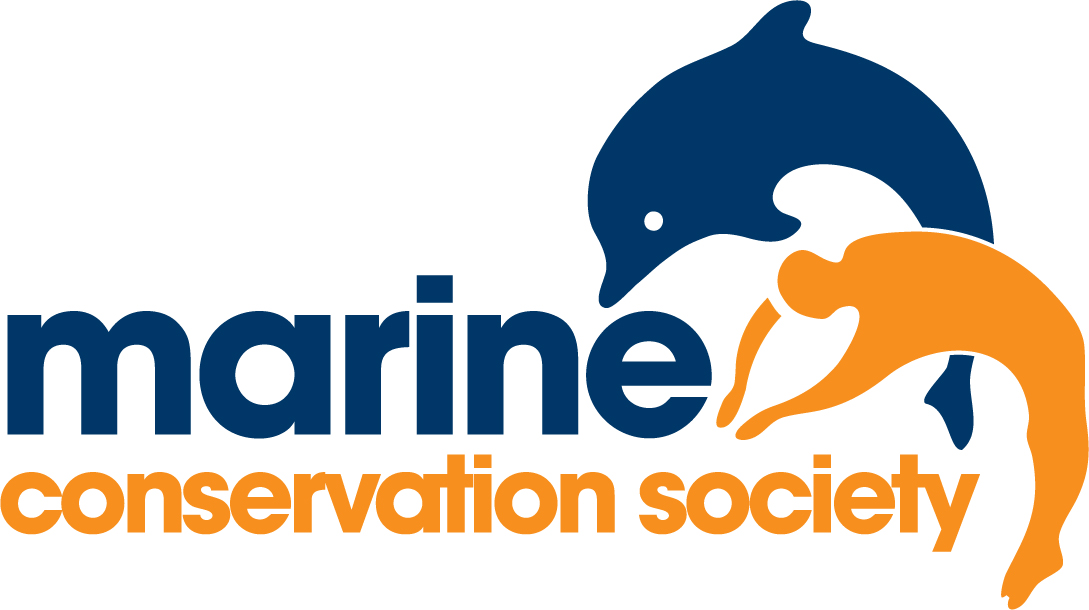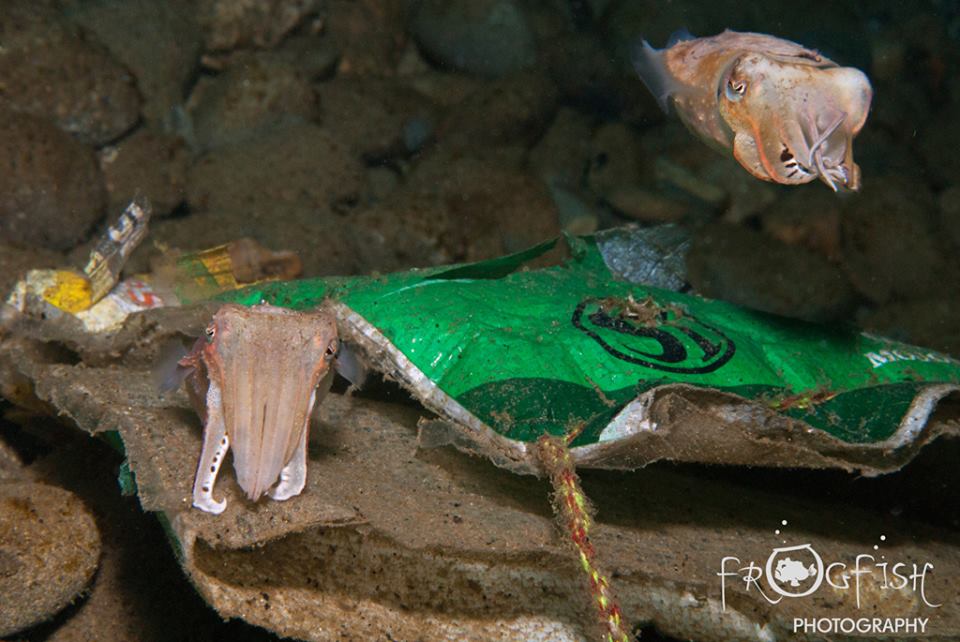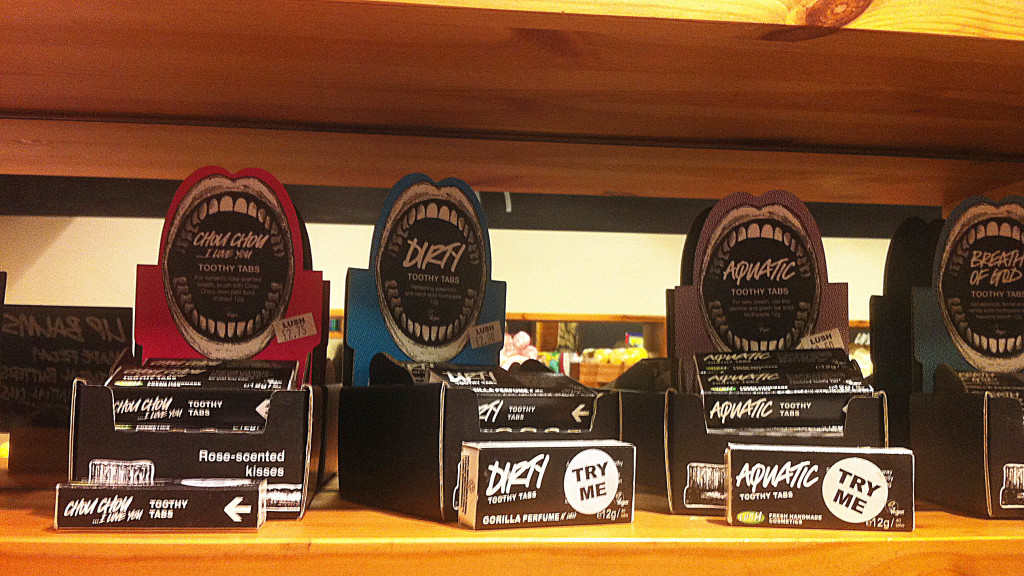Marine Life & Conservation Blogs
Taking on the Marine Conservation Society’s Plastic Challenge

We have long been supporters of the Marine Conservation Society, so when we saw that they had created a challenge to give up single use plastic for the month of June, we decided it was a challenge worth attempting. After all – how hard can it be?
So, what is the Marine Conservation Society Plastic Challenge all about? The MCS wanted to raise both awareness and money, by creating #plasticchallenge. Those taking part agreed to give up single use plastic for as long as they possibly could during the month of June. Huge quantities of this single use plastic ends up in our seas, rivers and oceans and ultimately kills and maims marine life all over the world. Many species can easily mistake a plastic bag for a jelly fish, the micro-plastic that has broken down is eaten by fish, or the bigger animals – like basking sharks – might simply scoop it up accidentally. What we do know is that throughout the world, dead marine life is turning up with their stomachs full of plastic, or bands from beer cans wrapped around their torso. The one obvious solution is to dramatically reduce the amount of plastic that we use and then cast away.
We very quickly discovered that we needed to change everything about the way we shopped. We had already stopped using plastic carrier bags many years ago, so this aspect was not a challenge for us, but nearly everything else (apart from beer and wine – phew) was difficult. We do not eat ready-made meals, as Nick is a bit of a wiz in the kitchen, so again, that was already easier for us to adapt – but so much salad and veg is pre-wrapped with plastic trays and covering, that buying from local shops and supermarkets was to prove extremely difficult. Some veg was possible, such as leeks and butternut squash, but the choice was limited. The solution to this was very easy for us, as we have a nearby vegan organic supermarket (Unicorn Grocery) that provides old fashioned paper bags for veg – so there was one problem solved. But what about toilet roll, cereal (so many products have a nice cardboard exterior – with a horrible plastic bag within), frozen food, etc? Nick started making things we would normally buy pre-prepared, like hummus, pasta and pizzas, which takes more time, but is ultimately healthier for us (as well as for the planet). As fruit juice is either in plastic bottles, or has a plastic cap, we had to make our own at home. We now have a traditional milkman to deliver glass bottles of milk.
All the supermarkets we visited were willing to put cheese and meats into a re-usable container that we took with us, although we did get some funny looks! We made more regular visits to local independent shops, such as the pet shop that sells locally made dog treats that Paddy (our golden retriever) could walk in a select himself. This has now become a bit of in issue though, as we get dragged to the pet shop on every visit to the shops! Bathroom products such as toothpaste and shampoo cannot be bought in the usual supermarket deals, but a trip into Manchester centre gave us the chance to pop into Lush, who have an amazing range of eco-friendly products.
A lifestyle on the go makes this challenge even harder. We have to do a fair bit of traveling within the UK and overseas. You cannot just pull over at a motorway service station and buy some sandwiches or snacks as these are all wrapped in plastic (apart from the odd pie), so you have to think ahead.
Doing the Marine Conservation Society Plastic Challenge has been a fantastic experience. We will not stop thinking about this at the end of June, but instead use the experience to continue reducing the amount of single use plastic that we buy and then throw away on a daily basis. Have a go, for a day, week or month for yourselves. It gives you a real understanding of the massive scale of the problem facing us.
If you like what we did, or if this has inspired you in any way, or if you just want to support an excellent charity that strives to protect our marine life – then please donate what you can here.
For more information about the Marine Conservation Society, visit www.mcsuk.org.
Blogs
The Ocean Cleanup Breaks 10,000,000 KG Barrier

The Ocean Cleanup, the global non-profit project, has removed a verified all-time total of ten million kilograms (22 million lbs.) of trash from oceans and rivers around the world – approximately the same weight as the Eiffel Tower.
To complete its mission of ridding the oceans of plastic, The Ocean Cleanup uses a dual strategy: cleaning up the Great Pacific Garbage Patch (GPGP) to remove the plastic already afloat in the oceans, while stopping the flow of plastic from the world’s most polluting rivers.
Through cleaning operations in the GPGP and in rivers in eight countries, the cumulative total of trash removed has now surpassed ten million kilograms. This milestone demonstrates the acceleration of The Ocean Cleanup’s impact, while underlining the astonishing scale of the plastic pollution problem and the need for continued support and action.
While encouraging for the mission, this milestone is only a staging point: millions more tons of plastic still pollute our oceans and The Ocean Cleanup intends to continue learning, improving and innovating to solve this global catastrophe.
This announcement comes as governments from around the world meet to continue negotiations to develop a new legally binding instrument to end plastic pollution at INC4 in Ottawa, Canada. Representatives of The Ocean Cleanup will be in attendance and the organization will be urging decision-makers to collaborate towards a comprehensive and ambitious global treaty which addresses plastic at all stages of its life cycle and in all marine environments worldwide, including in areas beyond national jurisdiction.
It is encouraging to see that the need for remediation is reflected in the various options for potential treaty provisions. It is essential that the final treaty contains clear targets for the remediation of legacy plastic pollution, and reduction of riverine plastic emissions.
Tackling plastic pollution requires innovative and impactful solutions. The treaty should therefore incentivize the innovation ecosystem by fostering innovations that make maximal use of data, technology and scientific knowledge – such as those designed and deployed by The Ocean Cleanup.
‘After many tough years of trial and error, it’s amazing to see our work is starting to pay off – and I am proud of the team who has brought us to this point.’ said Boyan Slat, Founder and CEO of The Ocean Cleanup. ‘While we still have a long way to go, our recent successes fill us with renewed confidence that the oceans can be cleaned.’
The Ocean Cleanup was founded in 2013 and captured its first plastic in 2019, with the first confirmed catch in the GPGP coming soon after the deployment of Interceptor 001 in Jakarta, Indonesia. After surpassing one million kilograms of trash removed in early 2022, the non-profit project has since progressed to the third iteration of its GPGP cleaning solution, known as System 03, and a network of Interceptors currently covering rivers in eight countries, with more deployments set for 2024.
About The Ocean Cleanup
The Ocean Cleanup is an international non-profit organization that develops and scales technologies to rid the world’s oceans of plastic. They aim to achieve this goal through a dual strategy: stemming the inflow via rivers and cleaning up the legacy plastic that has already accumulated in the ocean. For the latter, The Ocean Cleanup develops large-scale systems to efficiently concentrate the plastic for periodic removal. This plastic is tracked and traced through DNV’s chain of custody model to certify claims of origin when recycling it into new products. To curb the tide via rivers, The Ocean Cleanup has developed Interceptor™ solutions to halt and extract riverine plastic before it reaches the ocean. Founded in 2013 by Boyan Slat, The Ocean Cleanup now employs a broadly multi-disciplined team of approximately 140. The foundation is headquartered in Rotterdam, the Netherlands.
For more information, visit: theoceancleanup.com and follow @theoceancleanup on social media.
Marine Life & Conservation Blogs
Creature Feature: Dusky Shark

 In this series, the Shark Trust will be sharing amazing facts about different species of sharks and what you can do to help protect them.
In this series, the Shark Trust will be sharing amazing facts about different species of sharks and what you can do to help protect them.
This month we’re taking a look at the Dusky Shark, a highly migratory species with a particularly slow growth rate and late age at maturity.
Dusky sharks are one of the largest species within the Carcharhinus genus, generally measuring 3 metres total length but able to reach up to 4.2 metres. They are grey to grey-brown on their dorsal side and their fins usually have dusky margins, with the darkest tips on the caudal fin.
Dusky Sharks can often be confused with other species of the Carcharhinus genus, particularly the Galapagos Shark (Carcharhinus galapagensis). They have very similar external morphology, so it can be easier to ID to species level by taking location into account as the two species occupy very different ecological niches – Galapagos Sharks prefer offshore seamounts and islets, whilst duskies prefer continental margins.
Hybridisation:
A 2019 study found that Dusky Sharks are hybridising with Galapagos Sharks on the Eastern Tropical Pacific (Pazmiño et al., 2019). Hybridisation is when an animal breeds with an individual of another species to produce offspring (a hybrid). Hybrids are often infertile, but this study found that the hybrids were able to produce second generation hybrids!
Long distance swimmers:
Dusky sharks are highly mobile species, undertaking long migrations to stay in warm waters throughout the winter. In the Northern Hemisphere, they head towards the poles in the summer and return southwards towards the equator in winter. The longest distance recorded was 2000 nautical miles!
Very slow to mature and reproduce:
The Dusky Shark are both targeted and caught as bycatch globally. We already know that elasmobranchs are inherently slow reproducers which means that they are heavily impacted by overfishing; it takes them so long to recover that they cannot keep up with the rate at which they are being fished. Dusky Sharks are particularly slow to reproduce – females are only ready to start breeding at roughly 20 years old, their gestation periods can last up to 22 months, and they only give birth every two to three years. This makes duskies one of the most vulnerable of all shark species.
The Dusky Shark is now listed on Appendix II of the Convention on the Conservation of Migratory Species (CMS), but further action is required to protect this important species.
Scientific Name: Carcharhinus obscurus
Family: Carcharhinidae
Maximum Size: 420cm (Total Length)
Diet: Bony fishes, cephalopods, can also eat crustaceans, and small sharks, skates and rays
Distribution: Patchy distribution in tropical and warm temperate seas; Atlantic, Indo-Pacific and Mediterranean.
Habitat: Ranges from inshore waters out to the edge of the continental shelf.
Conservation status: Endangered.
For more great shark information and conservation visit the Shark Trust Website
Images: Andy Murch
Diana A. Pazmiño, Lynne van Herderden, Colin A. Simpfendorfer, Claudia Junge, Stephen C. Donnellan, E. Mauricio Hoyos-Padilla, Clinton A.J. Duffy, Charlie Huveneers, Bronwyn M. Gillanders, Paul A. Butcher, Gregory E. Maes. (2019). Introgressive hybridisation between two widespread sharks in the east Pacific region, Molecular Phylogenetics and Evolution 136(119-127), https://doi.org/10.1016/j.ympev.2019.04.013.
-

 News3 months ago
News3 months agoCapturing Critters in Lembeh Underwater Photography Workshop 2024: Event Roundup
-

 Marine Life & Conservation Blogs3 months ago
Marine Life & Conservation Blogs3 months agoCreature Feature: Swell Sharks
-

 Blogs2 months ago
Blogs2 months agoMurex Resorts: Passport to Paradise!
-

 Blogs2 months ago
Blogs2 months agoDiver Discovering Whale Skeletons Beneath Ice Judged World’s Best Underwater Photograph
-

 Gear Reviews3 weeks ago
Gear Reviews3 weeks agoGEAR REVIEW – Revolutionising Diving Comfort: The Sharkskin T2 Chillproof Suit
-

 Gear Reviews3 months ago
Gear Reviews3 months agoGear Review: Oceanic+ Dive Housing for iPhone
-

 Marine Life & Conservation2 months ago
Marine Life & Conservation2 months agoSave the Manatee Club launches brand new webcams at Silver Springs State Park, Florida
-

 News2 months ago
News2 months agoPADI Teams Up with Wellness Brand Neuro to Drive Ocean Change and Create a Blue State of Mind





















